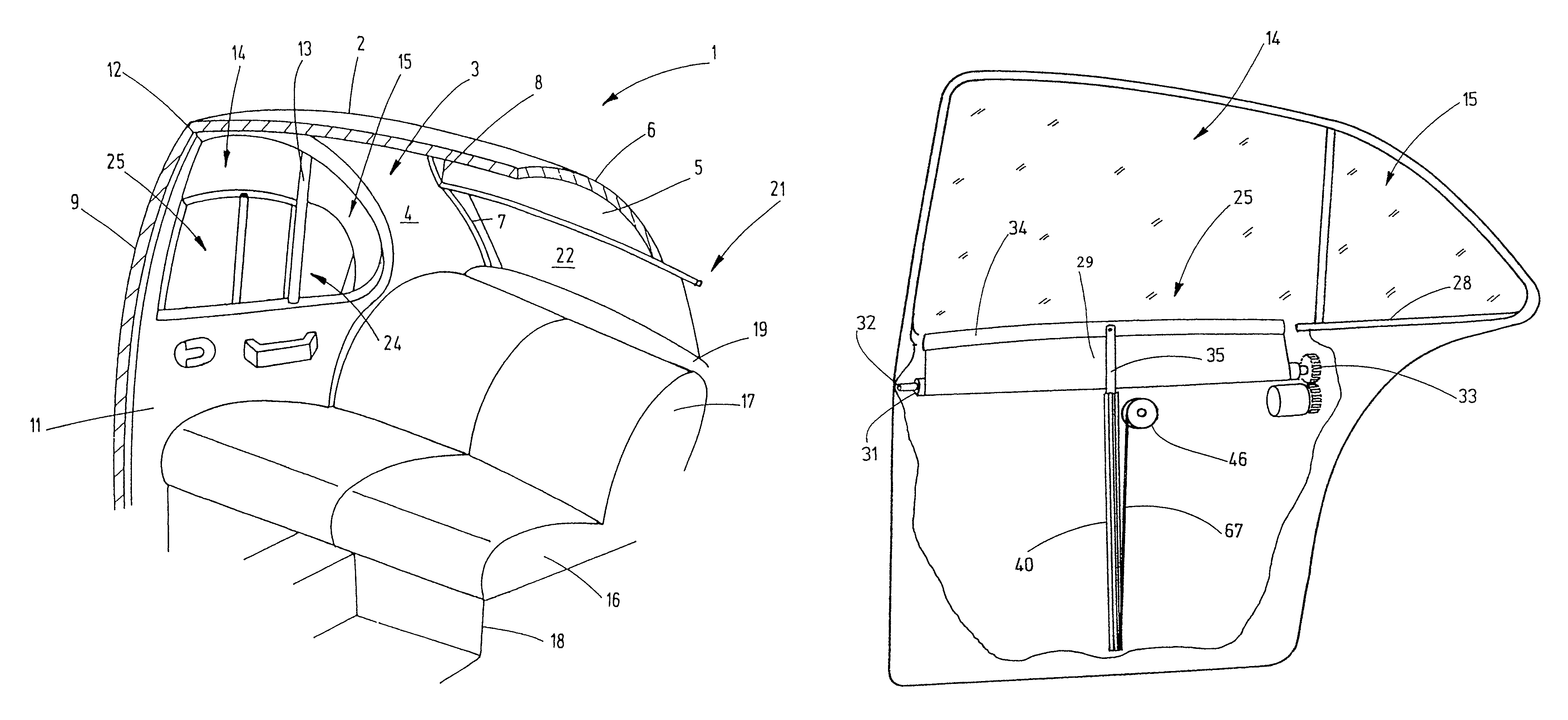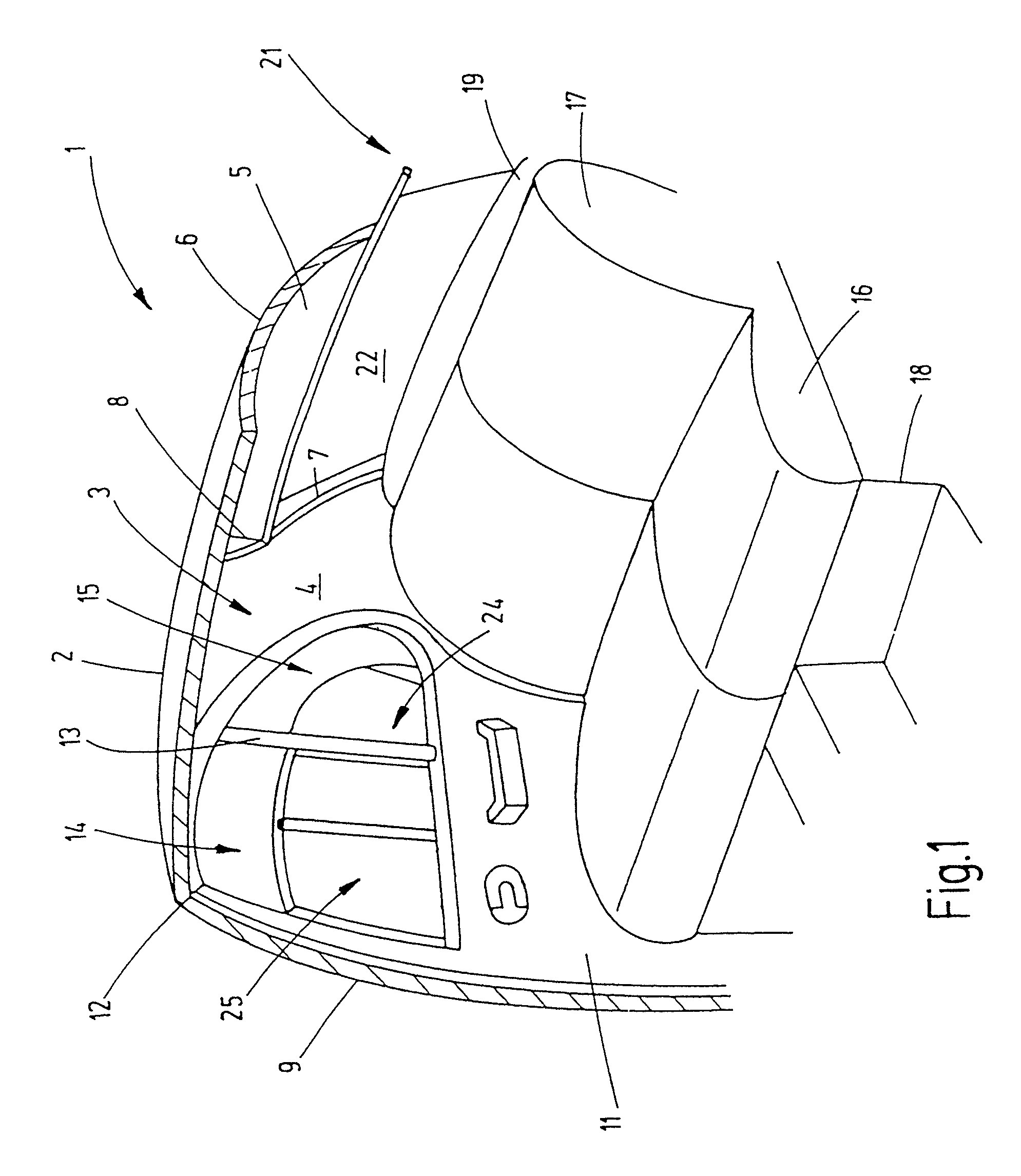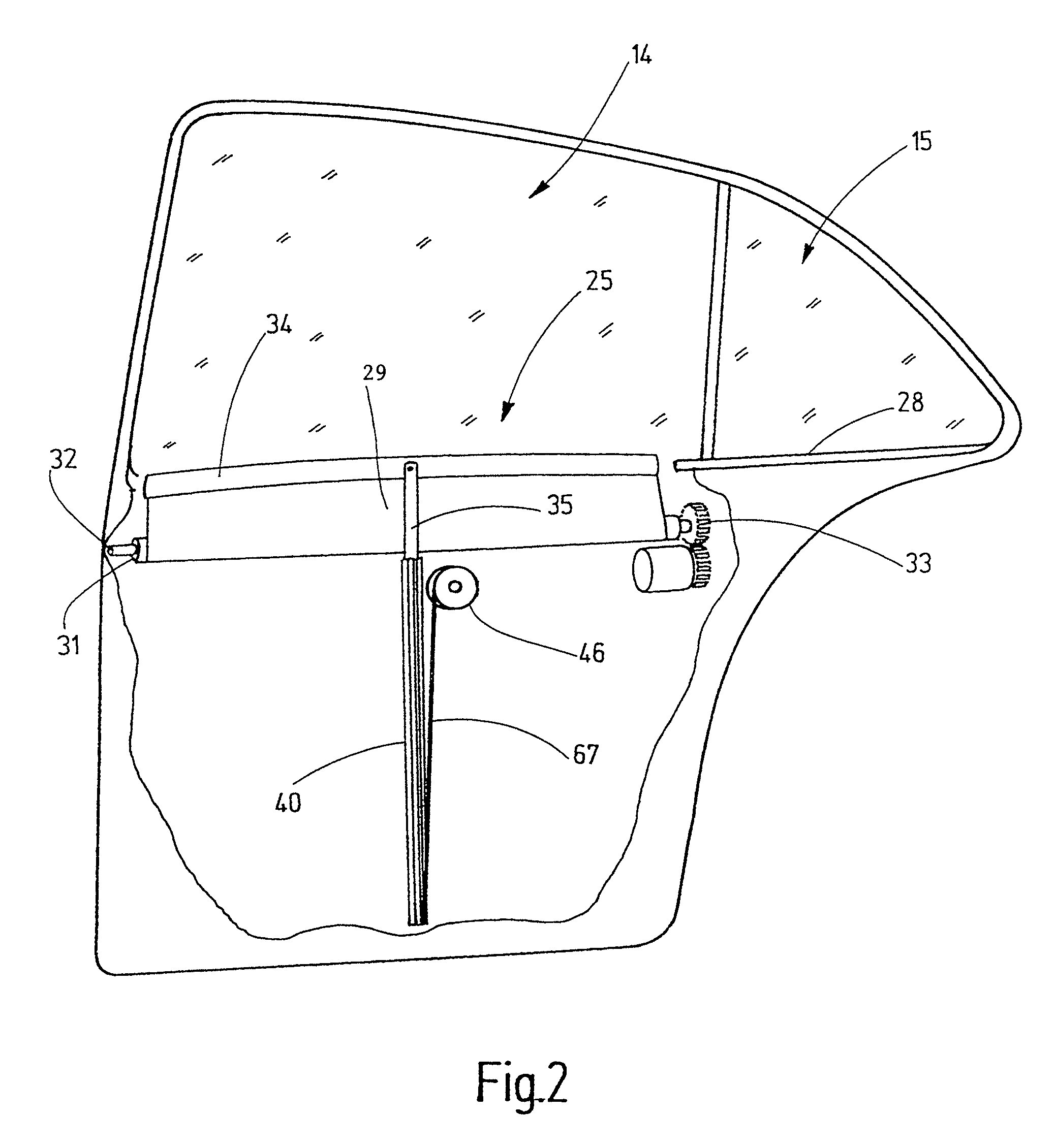Side window roller blind with hinged pull rod and rectangular support rod
a technology of roller blinds and hinges, applied in the field of roller blinds, can solve the problems of unattractiveness and the possibility of using such winding shafts
- Summary
- Abstract
- Description
- Claims
- Application Information
AI Technical Summary
Benefits of technology
Problems solved by technology
Method used
Image
Examples
Embodiment Construction
[0019]Referring now more particularly to FIG. 1 of the drawings, there is shown the rear area of a passenger car having a side window roller blind in accordance with the invention. The figure illustrates a view onto the right interior side, which is a mirror image of the broken-away left interior side. Unless otherwise indicated, the explanations for the right body side apply accordingly to the left body side as well. The representation is simplified; for instance, structures inside the bodies such as reinforcements and fastening means are not shown, since a representation thereof is not required for understanding the invention.
[0020]The illustrated vehicle has a body section 1 that comprises a roof 2 from which a C-column 3 extends laterally downward to a bottom group, not shown. A corresponding C-column exists on the opposite broken away side of the vehicle. The C-column 3 is furnished on its inner side with an inside trim panel 4.
[0021]A roof 2 transitions at its rear edge into a...
PUM
 Login to View More
Login to View More Abstract
Description
Claims
Application Information
 Login to View More
Login to View More - R&D
- Intellectual Property
- Life Sciences
- Materials
- Tech Scout
- Unparalleled Data Quality
- Higher Quality Content
- 60% Fewer Hallucinations
Browse by: Latest US Patents, China's latest patents, Technical Efficacy Thesaurus, Application Domain, Technology Topic, Popular Technical Reports.
© 2025 PatSnap. All rights reserved.Legal|Privacy policy|Modern Slavery Act Transparency Statement|Sitemap|About US| Contact US: help@patsnap.com



